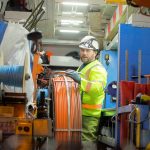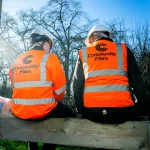The Best and Worst 10 Areas in the UK to Live by Broadband Speed
A new study has identified the top 10 and bottom 10 council areas in the United Kingdom to live by their average (mean) broadband ISP speed, which is ranked by considering the average speed that is possible if everyone in the area brought the fastest available service. Speedtest data is then used as a balance.
In the past most studies of this sort have tended to rank areas by looking at the results from speedtest based data and then producing a direct average, which can be highly misleading because such reports often fail to factor in the underlying network availability (i.e. whether or not local users could order a much faster connection).
Alternatively other studies have attempted to rank areas purely by network availability, which doesn’t always reflect the fact that in some areas even the best available networks may not always deliver its top broadband speeds. By comparison this research from Thinkbroadband has focused on network availability but also weighted that against the known speedtest based performance in order to produce a potentially more useful table.
Advertisement
One difficulty here is shown by the fact that the central City of London area pops up mid-table in the fastest 10 list, which is unusual given that it has a very low coverage of “superfast broadband” (30Mbps+). “This highlights the effect that over 1 in 3 premises with access to [FTTP] with maximum speeds ranging from 300Mbps to 940Mbps can have,” said TBB’s Andrew Ferguson. The actual observed speeds for the area thus tell a very different story (right side of the table).
NOTE: We’ve had to cut the ultrafast (100Mbps+) and FTTP/H coverage columns out as otherwise the data wouldn’t fit (TBB has the full table).
Top 10 UK Council Areas for Best Case Speeds
| Council | Best Case Mean Average Download (Mbps) | Superfast Coverage 30Mbps+ | Observed Median Download (Mbps) | Observed Median Upload (Mbps) | Observed Mean Download (Mbps) | Observed Mean Upload (Mbps) |
| Bournemouth | 401 | 99.70% | 25 | 4.7 | 37.3 | 6 |
| Tower Hamlets | 359 | 93.10% | 14.6 | 2.3 | 32.3 | 16 |
| Wandsworth | 358 | 98.20% | 22.7 | 4.6 | 42.1 | 20.3 |
| West Berkshire | 355 | 98.40% | 25.7 | 5.7 | 37.4 | 14.3 |
| City of London | 343 | 51.60% | 19.1 | 6.5 | 32.9 | 23.2 |
| Newham | 321 | 98.50% | 23.4 | 4.9 | 39.8 | 13.5 |
| York | 321 | 95.60% | 21.3 | 4.5 | 36.5 | 8.3 |
| Southwark | 319 | 93.70% | 17.9 | 2.6 | 33.4 | 11.2 |
| Greenwich | 312 | 99.10% | 25.3 | 5.4 | 37.3 | 11.9 |
| Hounslow | 311 | 99.10% | 25.7 | 4.8 | 40 | 10.1 |
Bottom 10 UK Council Areas for Best Case Speeds
| Council | Best Case Mean Average Download (Mbps) | Superfast Coverage 30Mbps+ | Observed Median Download (Mbps) | Observed Median Upload (Mbps) | Observed Mean Download (Mbps) | Observed Mean Upload (Mbps) |
| Moray | 40 | 85.80% | 15.4 | 1.8 | 19.4 | 3.6 |
| Dumfries and Galloway | 40 | 82.50% | 14.1 | 1.1 | 18.7 | 3.7 |
| North Norfolk | 40 | 84.10% | 14.8 | 1.3 | 20.2 | 4.4 |
| Argyll and Bute | 40 | 80.30% | 13.1 | 1.6 | 18.7 | 3.9 |
| Highland | 39 | 78.60% | 13.6 | 1.5 | 19.6 | 4.1 |
| Aberdeenshire | 39 | 80.60% | 17.2 | 3.6 | 22 | 5.2 |
| Na h-Eileanan an Iar | 38 | 70.40% | 15.6 | 1.8 | 20.2 | 4.3 |
| Fermanagh and Omagh | 35 | 63.90% | 11.8 | 1.2 | 19.3 | 4 |
| Shetland Islands | 35 | 73.50% | 13.9 | 0.9 | 18.7 | 4 |
| Orkney Islands | 33 | 65.40% | 8.3 | 15.3 | 0.7 | 2.7 |
Mark is a professional technology writer, IT consultant and computer engineer from Dorset (England), he also founded ISPreview in 1999 and enjoys analysing the latest telecoms and broadband developments. Find me on X (Twitter), Mastodon, Facebook, BlueSky, Threads.net and Linkedin.
« Snooping TalkTalk Security Feature Causes Customer Concern UPDATE2
















































Comments are closed